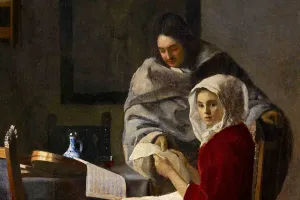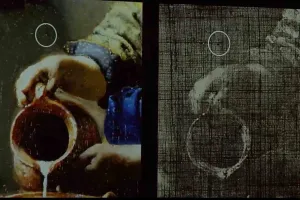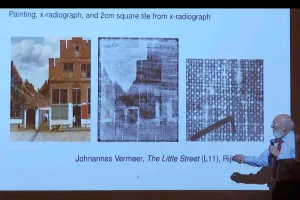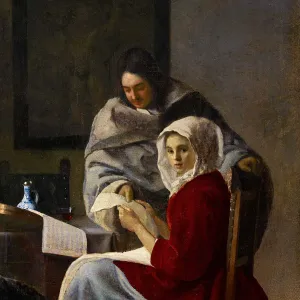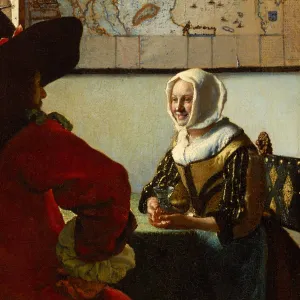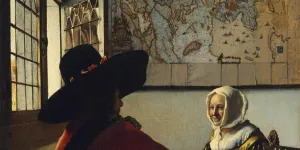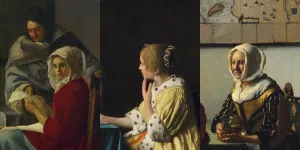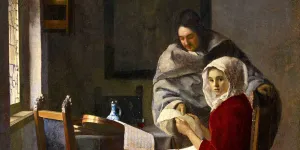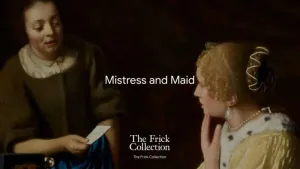Johannes Vermeer
Apart from the account of Vermeer’s baptism in Delft in 1632, few known documents record his early life and none describe his artistic training, which has been the subject of much speculation. In 1653, he married Catharina Bolnes, who is believed to have served as a model for a number of his paintings. Later that year, Vermeer registered with Delft’s Guild of St. Luke as a master, indicating that he had by then completed the requisite six years of apprenticeship. Vermeer produced a small number of mythological and biblical scenes and cityscapes. He is most celebrated for genre scenes of women and men in domestic settings. Such imagery, popular in seventeenth-century Dutch art, was practiced by contemporaries like Pieter de Hooch, to whom a number of Vermeer’s paintings have been formerly attributed. Vermeer’s work commanded high prices, yet the expenses of his large family, his unsold inventory as a painter and art dealer, and the Dutch economic downturn of the 1670s appear to have depleted his resources to the extent that he died in debt at the age of forty-three. He was buried in the Oude Kerk (Old Church) of his native city. Today, only thirty-four paintings are generally accepted to be by Vermeer’s hand, of which three are in The Frick Collection.
Recent Exhibition: Vermeer's Love Letters, June 18 to August 31, 2025
Works in the Collection
Listen
Blogs
What We Look at When We Look at a Vermeer
Return of the Vermeers: New Insights on Three Masterworks
Reading List: New Perspectives on Vermeer
Interactive Stories
Mistress and Maid
A young woman and her maid wondering about the arrival of a mysterious letter.
Officer and Laughing Girl
An intimate encounter between a dashing soldier and a fashionable young woman.
Girl Interrupted at Her Music
Explore the presence of music in the work of Johannes Vermeer.


